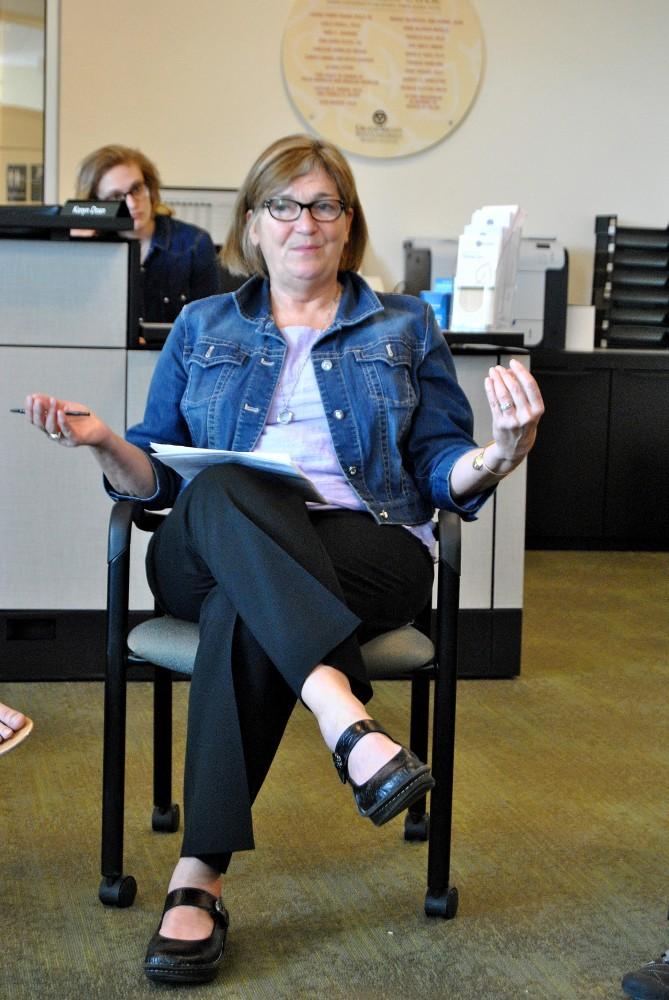Women’s Center discusses student loans

GVL / Brianna Olson JoAnn Wassenaar
Apr 16, 2015
The Women’s Center at Grand Valley State University holds a monthly program called Talk Back Tuesday, where members of the GVSU community are welcomed into the center to speak about current issues. The program had its last meeting of the semester on April 14.
Titled “Student Debt: The Government’s Dirty Little Secret,” the event delved into the struggles college students and graduates have in regard to understanding their student debt and the consequences that may occur.
“Through the years working with students, it’s becoming sort of a passion of mine to find more about (student debt) and what can be done,” said Jo Ann Wassenaar, associate director of the Women’s Center.
Wassenaar began the conversation by explaining some critical facts.
Currently, there is $1.2 trillion of student debt. Between 2007 and 2012, the federal government made $166 billion off of these loans, and it will make approximately $110 billion over the next decade.
These facts introduced the discussion of the federal government’s role in student loans and the disapproval of big businesses profiting off of student debt.
Since the government has decreased its funding to schools, the amount of federal loans students have access to has decreased and made it harder for students to qualify for, Wassenaar said.
Once a college student graduates, they have a six-month grace period before they are required, by the federal government, to start paying back their loans.
Even due to the bankruptcy or death, the government will still come after someone’s estate and savings.
The group noted the abundance of online articles pertaining to how to pay off college debt quickly, or even into retirement, and how this phenomenon is normalized.
In some countries, the government pays for a majority of college for prospective students.
Some European countries, for example, have a standardized testing system that determines which colleges students can attend. Then the government financially supports students throughout their academic careers.
“The federal student loans started out as a program to make school accessible to people,” Wassenaar said. “Before, if you didn’t have the family income, you simply did not go to college – so federal loans made that possible.”
When a student fails to keep up with their student loan payments, their credit score will be negatively affected. A low credit score will affect their ability to apply for future loans, for things like cars and houses.
The federal government can withhold income tax refunds, social security and have a student’s paychecks garnished if they fail to pay their student debt, Wassenaar said.
“A lot of companies now do credit checks when you apply to work for them,” Wassenaar said. “So if your credit is impacted by not paying student debt, that can impact your ability to get that job, that apartment or that house.”
The group also discussed the fact that groups of people with wage discrepancies are still expected to pay the same amount of loans.
Since the issues with student debt are so widespread, there is a growing social movement for students to push the federal government to ease up on the cost of college.
“I think that the government would like us to think it’s impossible to never get rid of billions of dollars of student loan debt,” said Colette Seguin Beighley, the director of the Milton E. Ford LGBT Resource Center. “What they say is possible and what is possible are two different things.”
Seguin Beighley encouraged students to not only seek information about college debt while they attend school through the financial aid office, but also after graduation.
“Organize, that is what I say to you,” Seguin Beighley said. “As soon as you leave here, you’re isolated.”
For more information, visit www.gvsuedu/financialaid.























